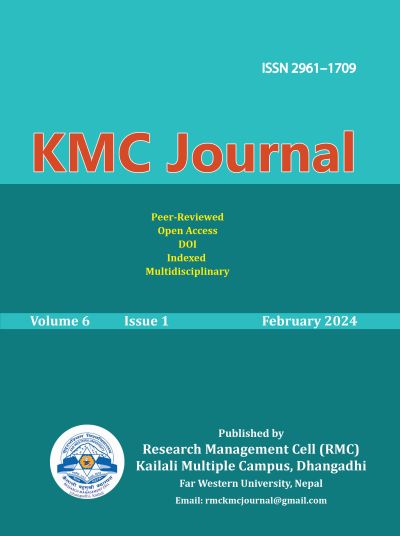Socio-Cultural Dynamics of Cross-Border Labour Migration between Nepal and India
DOI:
https://doi.org/10.3126/kmcj.v6i1.62366Keywords:
Cross-border, labour migration, socio-cultural dynamics, Nepal and IndiaAbstract
The enduring relationship between Nepal and India is the focus of this study, which delves into the social and cultural dynamics adopted by Nepali and Indian labour migrants in their respective destinations. The study extends to the examination of labour migrants' social backgrounds, encompassing aspects such as religion, caste, ethnicity, education, and family structure. Employing a mixed-methods approach, the study incorporates case studies supported by field observations in the destination countries. The gathered data undergoes analysis through descriptive statistics, allowing for a comparative assessment between the two migrant groups. While the socio-cultural status of both groups exhibits slight differences, disparities in caste and ethnicity indicators are noted between Nepal and India. Notably, a significant proportion of Nepali labour migrants hail from Dalit communities when compared to other caste and ethnic groups. In contrast, Indian labour migrants, predominantly from the Other Backward Class (OBC), exhibit a different trend. The volume of Nepali labour migrants heading to India surpasses that of Indian labour migrants to Nepal. The shorter migration distance for Indian labour migrants enables frequent visits to their place of origin, facilitating the celebration of local traditions and culture. In contrast, Nepali labour migrants encounter fewer opportunities to return to their destination regularly. A noteworthy observation is the comparatively higher educational status of Nepali labour migrants as opposed to their Indian counterparts heading to Nepal. The nuanced differences between the two migrant groups correlate with their religious affiliations and socio-economic backgrounds. Interestingly, both groups exhibit a limited number of enrolled children in destination schools, indicating a shared challenge in accessing education opportunities.
Downloads
Downloads
Published
How to Cite
Issue
Section
License

This work is licensed under a Creative Commons Attribution-NonCommercial 4.0 International License.
This license allows reusers to distribute, remix, adapt, and build upon the material in any medium or format for noncommercial purposes only, and only so long as attribution is given to the creator.




